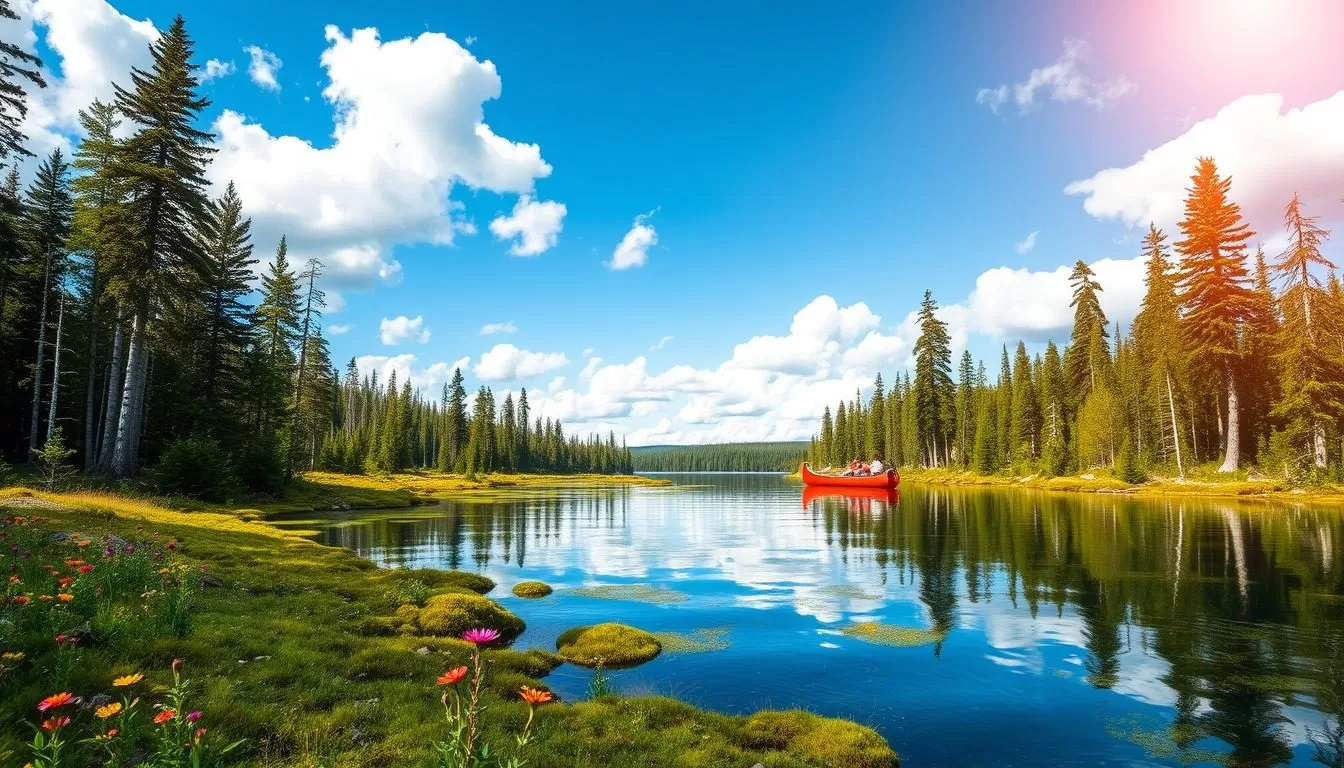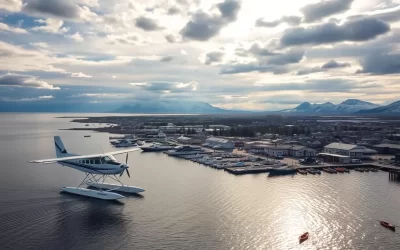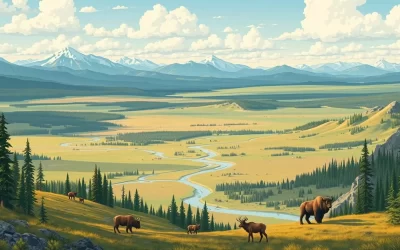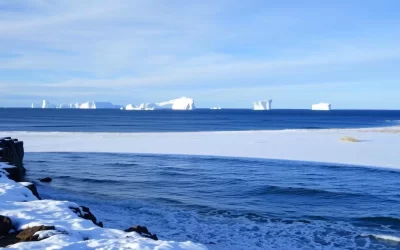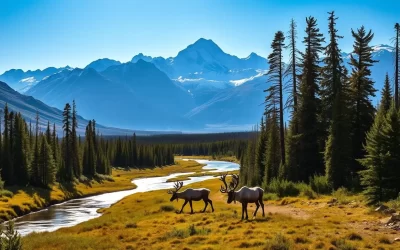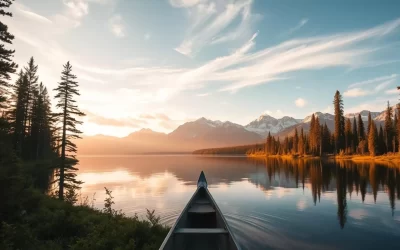Imagine standing on the shores of one of North America’s most spectacular natural wonders, surrounded by the untouched wilderness of Canada’s vast landscape.
You’ll be drawn into the awe-inspiring world of Great Slave Lake, the second-largest lake within Canadian borders and a paradise for outdoor enthusiasts. The lake’s vast waters, rugged shorelines, and unique geological features offer an adventure like no other.
As you explore this pristine environment, you’ll uncover the rich cultural heritage of the Indigenous communities who have called its shores home for generations. From world-class fishing to witnessing the breathtaking Northern Lights, your journey to Northwest Territories will be an unforgettable experience.
Discovering Great Slave Lake: North America’s Hidden Gem
Nestled in the Northwest Territories, Great Slave Lake is a treasure trove of natural beauty and history. For many years, the indigenous and Métis people have called the regions surrounding Great Slave Lake their home, with several distinct communities bordering the lake, each with their own traditions and languages.
Location and Size
Great Slave Lake is one of Canada’s largest lakes, formed during the last ice age. It covers a vast area, making it a significant geographical feature of the Northwest Territories. The lake’s size and location make it a unique destination for explorers and nature enthusiasts.
Geological and Historical Significance
The history of Slave Lake is as fascinating as its geology. The lake was named after the Slavey (Dene) First Nations people who lived along its shores. Archaeological evidence shows that Indigenous peoples have inhabited its shores for thousands of years, with signs of human presence dating back over 8,000 years. European exploration began in the late 18th century, and subsequent discoveries of gold and diamonds brought development to the region, though much of the shoreline remains pristine wilderness, home to many people who value its history.
Best Time to Visit Great Slave Lake
To make the most of your visit to Great Slave Lake, understanding the seasonal changes is crucial. The lake offers a unique experience throughout the year, with each season bringing its own set of activities and breathtaking scenery.
Summer Season (June-August)
During the summer, Great Slave Lake is a haven for outdoor enthusiasts. Although the specific details about summer activities are not provided, it’s a great time to enjoy the lake’s natural beauty.
Fall and Winter Experiences
As summer fades, fall brings spectacular autumn colors to the boreal forests surrounding Great Slave Lake, creating breathtaking scenery for photographers. You’ll have excellent opportunities to witness the Northern Lights beginning in late August when darkness returns to the northern skies. If you’re looking for northern lights, consider booking a trip from mid-August to mid-September. Winter transforms Great Slave Lake into an entirely different world, with the lake freezing over completely, usually by December, creating a vast ice highway. This season offers unique activities like ice fishing, snowmobiling, and dog sledding across the frozen lake.
| Season | Activities | Best Time |
|---|---|---|
| Fall | Northern Lights Viewing, Photography | Late August to mid-September |
| Winter | Ice Fishing, Snowmobiling, Dog Sledding | December to March |
Choosing the right time to visit Great Slave Lake depends on your preferences and what you want to experience.
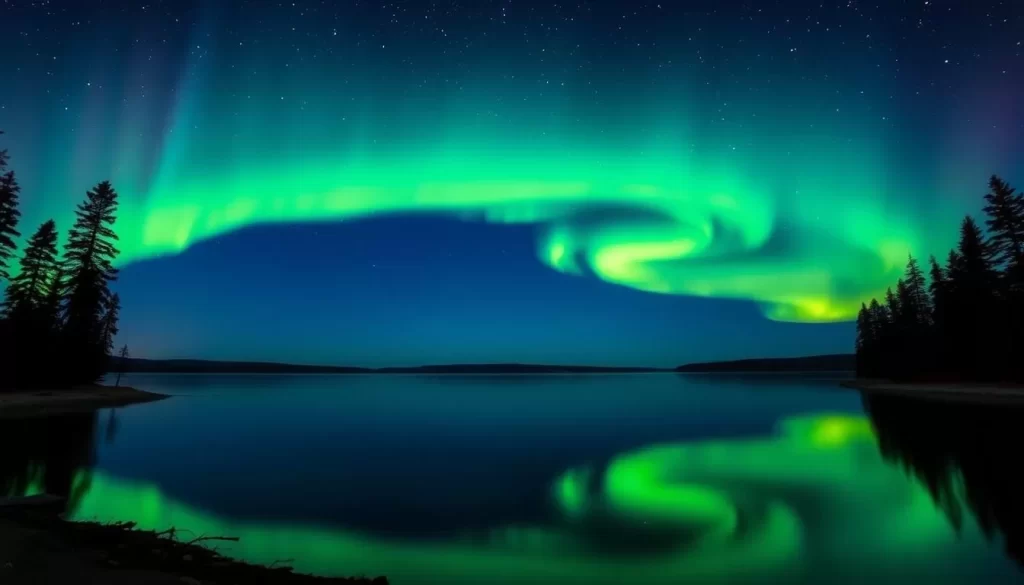
How to Get to Great Slave Lake
The journey to Great Slave Lake is just as exciting as the destination. You have options to reach this stunning location, whether you prefer flying or taking a scenic road trip.
Flying to Yellowknife

If you’re short on time, flying to Yellowknife is the most convenient way to reach Great Slave Lake. You can search for flights to Yellowknife Northwest Territories and enjoy a quick journey to this beautiful region.
Road Trip Options
Or you can drive! There’s a paved highway all the way to Yellowknife, making it a viable option for those with the time for a long road trip. Here are some key points to consider:
- For the adventurous traveler, you can drive to Yellowknife via the Mackenzie Highway (Highway 1) and Yellowknife Highway (Highway 3), which are fully paved routes connecting to the Canadian highway system.
- You’ll need to plan for a significant journey – driving from Edmonton to Yellowknife covers approximately 1,500 kilometers (932 miles) and typically takes 2-3 days, making it a substantial trip.
- The road trip offers spectacular scenery as you travel through northern Alberta and into the Northwest Territories, passing through boreal forests and crossing the mighty Mackenzie River.
- During winter months (December-March), you can experience driving on ice roads that connect Yellowknife to communities like Dettah across the frozen surface of Great Slave Lake, a unique way to explore the area.
Exploring Yellowknife: Gateway to Great Slave Lake
As you explore Yellowknife, the gateway to Great Slave Lake, you’ll discover a blend of natural beauty and cultural heritage. This vibrant city offers a variety of attractions that are worth visiting before you head out to the lake.
Prince of Wales Northern Heritage Centre
The Prince of Wales Northern Heritage Centre is a must-visit for history buffs. With its comprehensive exhibits on the region’s history and culture, you can gain a deeper understanding of the area. The centre showcases the rich heritage of the Northwest Territories, making it an enriching experience.
Old Town and Bush Pilot’s Monument
Take a stroll through Old Town, where you can admire the historic buildings and learn about Yellowknife’s past. Be sure to visit the Bush Pilot’s Monument, which honors the brave pilots who played a crucial role in the region’s aviation history.
Frame Lake Trail
For outdoor enthusiasts, the Frame Lake Trail offers a scenic 7-kilometer loop around Frame Lake. You’ll enjoy well-maintained paths that wind through forested areas, where wildlife sightings are common. The trail connects major city landmarks, including the Legislative Assembly and Somba K’e Civic Plaza.
Some highlights of the Frame Lake Trail include its accessibility year-round and the variety of activities it offers, such as cross-country skiing and snowshoeing in winter. Somba K’e Park, located along the trail, hosts events like the Yellowknife Farmers’ Market in summer and features spectacular holiday light displays in winter, making it a hub of activity throughout the year.
Witness the Spectacular Northern Lights
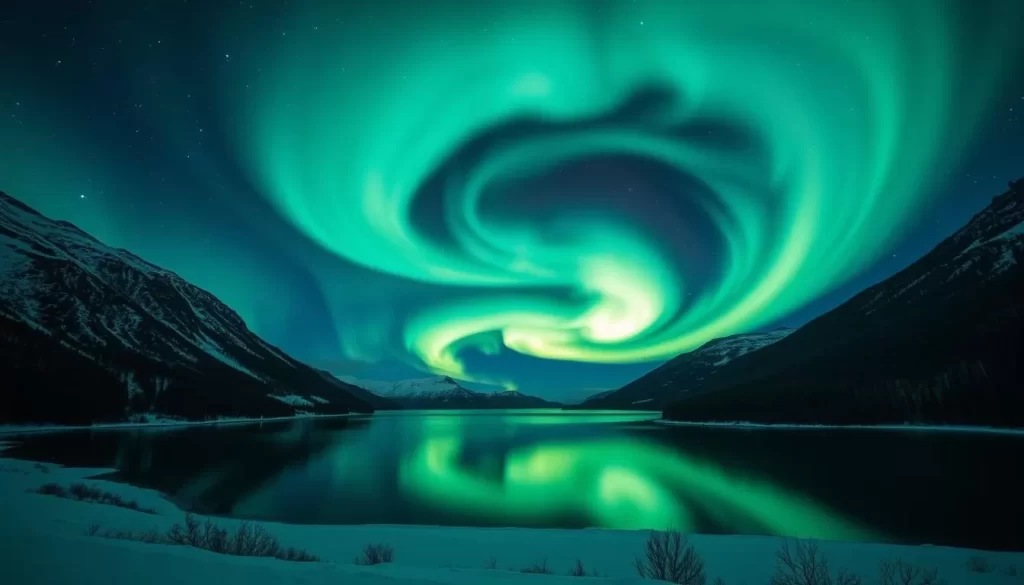
The aurora borealis is a natural wonder that you can witness in all its glory at Great Slave Lake. If you’re looking for a unique experience, consider booking a trip from mid-August to mid-September to take advantage of the fall aurora season.
Best Viewing Locations
For the best views of the Northern Lights, head to locations with minimal light pollution. Great Slave Lake offers several spots with unobstructed views of the night sky. You can also try viewing from the lake’s shoreline or nearby hills.
Photography Tips
To capture stunning Northern Lights photographs, you’ll need a camera with manual settings, a sturdy tripod, and a wide-angle lens. Set your camera to manual mode with an ISO of 1600, aperture at f/2.8 or wider, and a shutter speed between 5-15 seconds. Include interesting foreground elements like the lake shoreline or trees to add depth to your images.
- Use a camera with manual settings and a wide-angle lens with a fast aperture (f/2.8 or wider).
- Set your camera to manual mode with settings starting at ISO1600 and a shutter speed between 5-15 seconds.
- Focus your lens to infinity during daylight and tape the focus ring to avoid autofocus issues in the dark.
- Include interesting foreground elements to add depth and context to your images.
- Bring extra batteries to avoid missing the perfect aurora moment due to drained batteries.
World-Class Fishing Adventures
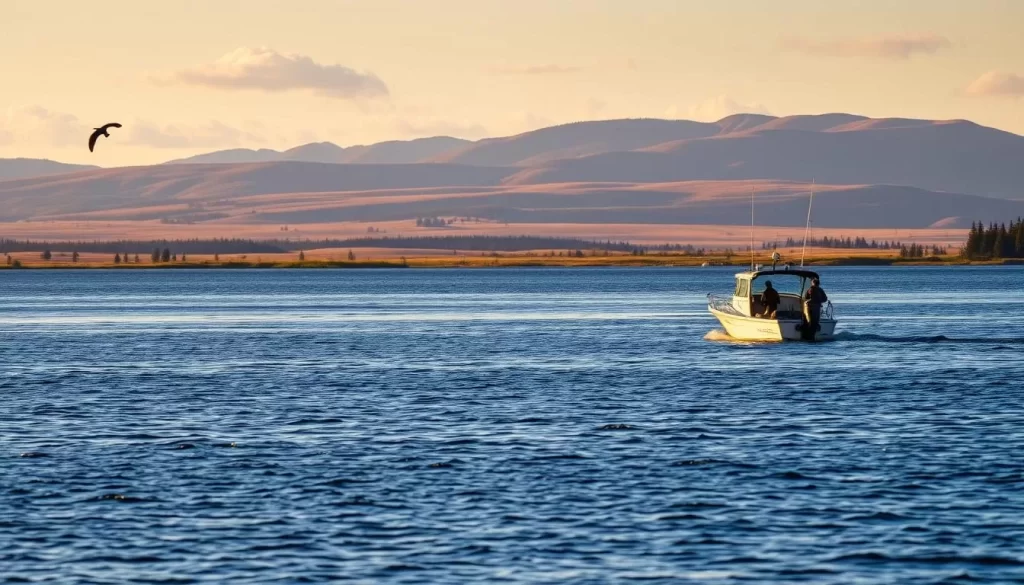
The crystal-clear waters of Great Slave Lake are a paradise for fishing enthusiasts, boasting an abundance of trophy fish. Great Slave Lake is known for its exceptional fishing opportunities, with a variety of species to catch, including lake trout and northern pike.
Trophy Lake Trout and Northern Pike
Great Slave Lake is famous for its lake trout fishing, with some catches weighing over 40 pounds. The lake’s diverse fish population also includes northern pike, making it a versatile destination for anglers. Whether you’re targeting lake trout or other species, the lake’s vast waters offer endless opportunities for exciting fishing experiences.
Top Fishing Lodges
Several world-class fishing lodges are located on Great Slave Lake, offering comfortable accommodations and guided fishing experiences. You’ll find lodges such as Trophy Lodge and indigenous-owned Frontier Lodge in the East Arm, and Trout Rock Lodge in the North Arm. These lodges provide all-inclusive packages, featuring gourmet meals with fresh-caught fish, professional guides, and quality equipment for a hassle-free fishing adventure on Great Slave Lake.
Paddling Great Slave Lake, Northwest Territories: Best Things to Do – Top Picks
For those seeking adventure, paddling Great Slave Lake is an experience like no other. The lake’s vast waters and stunning landscapes make it a paddler’s paradise.
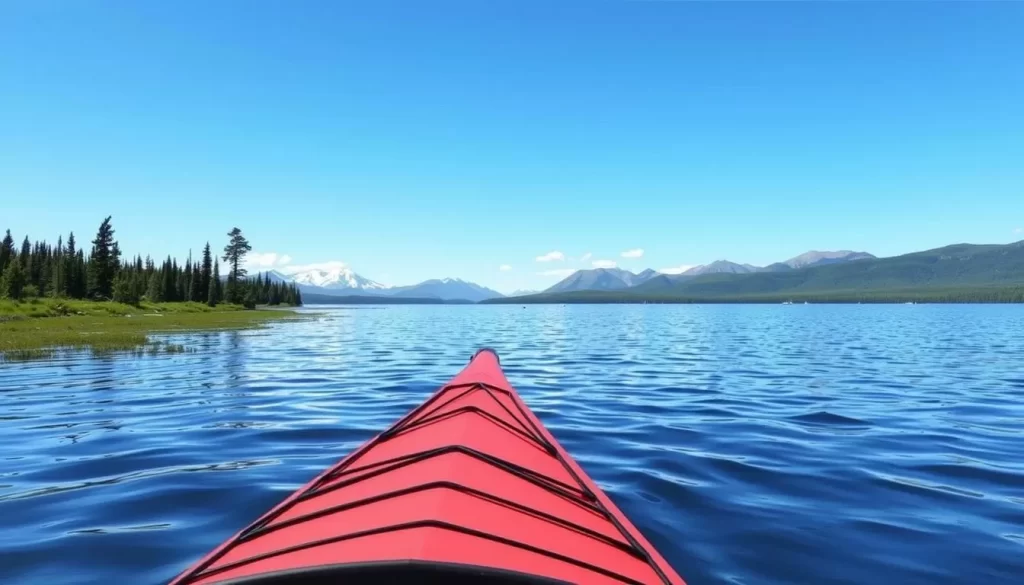
North Arm Paddling Routes
The North Arm of Great Slave Lake offers paddling routes that wind through pristine waters and around picturesque islands. Paddlers can explore the rugged shoreline and enjoy the tranquility of this vast northern lake.
East Arm Expeditions
The East Arm is known for its dramatic landscapes and abundant wildlife. Paddlers can embark on multi-day expeditions, camping on secluded beaches and exploring the lake’s many inlets.
Safety Tips and Equipment
Paddling Great Slave Lake demands respect due to its cold water and unpredictable weather. Always wear thermal protection, such as a wetsuit or drysuit, and equip your canoe with a spray deck for extended trips. Carry comprehensive safety equipment, including a satellite communication device and navigation tools, to ensure a safe trip on the water. Consider guided tours for your first boat trip.
Thaidene Nëné National Park Reserve
On the shores of one of the world’s largest freshwater lakes lies Thaidene Nëné National Park Reserve, an untouched wilderness area of remarkable ecological diversity. This park is where the barrens and subarctic boreal forest converge, creating a stunning display of rugged, northern beauty.
The Land of the Ancestors
Thaidene Nëné, meaning “Land of the Ancestors,” is a place of significant historical and cultural importance. The park includes the headwaters of storied rivers like the Thelon and Coppermine, and is home to Arctic species such as open-ground grizzlies and muskoxen, showcasing an ecosystem unlike the relatively plush environs of Great Slave Lake.
The name reflects the area’s importance to indigenous peoples, and the park’s diverse landscapes support a wide range of wildlife.
Hiking and Camping Opportunities
Thaidene Nëné offers some of North America’s most pristine wilderness hiking opportunities, with routes ranging from day hikes to multi-week expeditions. You can experience dramatic terrain transitions as you hike from the boreal forest through the taiga and into the edge of the tundra.
- Explore remote valleys, ridges, and shorelines with good navigation skills.
- Enjoy backcountry camping with spectacular views along shorelines and in protected valleys.
- Experience exceptional wildlife viewing opportunities, with possibilities to see caribou, wolves, bears, and muskoxen.

Wildlife Viewing Around Great Slave Lake
As you explore the Great Slave Lake region, you’ll discover a rich variety of wildlife that calls this harsh northern environment home. The area is renowned for its diverse ecosystems, which support a wide range of species.
Bird Watching Hotspots
Great Slave Lake is a paradise for bird watchers, with numerous hotspots around the lake offering sightings of various bird species. The diverse habitats, from wetlands to forests, attract a wide variety of birds. You can spot species such as loons, osprey, and bald eagles in their natural habitats.
Larger Wildlife: Moose, Bears, and Muskoxen
The region is home to an impressive array of larger wildlife, including moose, black bears, and the occasional grizzly bear. Muskoxen, with their prehistoric appearance, can be spotted in the East Arm region, particularly around Lutsel K’e and in Thaidene Nëné National Park. Wildlife viewing excursions can be arranged through local outfitters to ensure safe and respectful viewing.
| Wildlife | Location | Best Time to Spot |
|---|---|---|
| Moose | Wetland areas around Great Slave Lake | Early morning or evening |
| Black Bears | Forested regions surrounding the lake | Throughout the day |
| Muskoxen | East Arm region, around Lutsel K’e | During guided excursions |
Indigenous Cultural Experiences
Immerse yourself in the authentic Indigenous cultural experiences that Great Slave Lake has to offer. The region is home to several thriving First Nations communities, each with its own rich history and traditions.
Visiting Dettah and Łutsel K’e
Visit Dettah, a Yellowknives Dene settlement about 220 people, located just a short drive from Yellowknife. This community has been a summer gathering site for generations, offering insights into traditional Dene lifestyle, such as whitefish drying and moosehide tanning. You can learn about Dene history, culture, and cuisine by participating in land-based activities with local experts. In the winter, traveling to Dettah via the ice road is a unique Northern experience that has been a part of the locals’ lives for years.
Traditional Crafts and Knowledge
Indigenous artisans around Great Slave Lake create stunning traditional crafts, including intricate beadwork, moosehide moccasins, and birchbark baskets, reflecting thousands of years of cultural heritage. You can purchase authentic Indigenous art directly from creators at local markets and galleries. Participating in workshops led by Indigenous knowledge keepers provides hands-on experience with traditional skills. Moreover, learning about traditional knowledge, such as medicinal plants and sustainable harvesting practices, demonstrates the deep understanding Indigenous peoples have of their home territories.
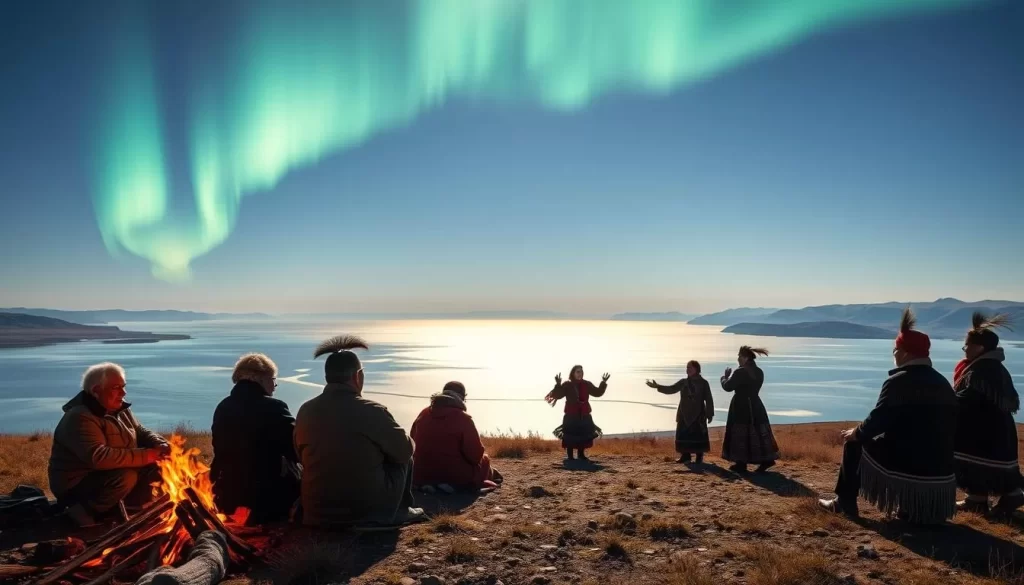
Winter Activities on Great Slave Lake
As winter sets in, Great Slave Lake transforms into a frozen playground offering a range of exciting activities. The frozen lake becomes a pathway for adventure, with the ice road connecting Yellowknife to Dettah being a true Northern experience.
Ice Road Adventures
The ice road across Great Slave Lake is an adventure in itself. You can drive across the frozen lake, enjoying the vast, snowy landscapes. Many locals and travelers take this scenic route, while others prefer to explore on snowmobiles, dog sleds, or even cross-country skis. The ice road offers a unique way to experience the beauty of the Northwest Territories.
Ice Fishing Experiences
Ice fishing on Great Slave Lake is a popular winter activity, offering the chance to catch trophy-sized lake trout, northern pike, and whitefish. Guided tours are available, providing equipment, heated shelters, and expert knowledge. The experience combines the thrill of fishing with breathtaking winter scenery, under brilliant blue skies or the dancing northern lights.
| Activity | Duration | Equipment Needed |
|---|---|---|
| Ice Road Driving | Half-day to Full-day | 4×4 Vehicle, Winter Gear |
| Guided Ice Fishing | Half-day to Multi-day | Fishing Gear, Warm Clothing |
| Snowmobiling | Full-day | Snowmobile, Safety Gear |
Day Trips from Yellowknife
Day trips from Yellowknife offer a chance to explore the region’s diverse natural attractions. The great outdoors lies close by the City of Yellowknife, with several territorial parks that provide a range of activities.
North Arm Territorial Park
North Arm Territorial Park is a great destination for those looking to explore the natural beauty of the area. You can enjoy fishing and boating on the lake, or take a hike through the scenic trails. The park offers a unique opportunity to experience the wilderness without traveling too far from Yellowknife.
Fred Henne and Prelude Lake Territorial Parks
For a day trip, consider visiting Fred Henne Territorial Park or Prelude Lake Territorial Park. Fred Henne Territorial Park, located within Yellowknife city limits, offers sandy beaches and hiking trails. Prelude Lake Territorial Park, just a 30-minute drive from Yellowknife, provides access to a beautiful lake with boat launches and fishing opportunities.
| Park Name | Location | Activities |
|---|---|---|
| Fred Henne Territorial Park | Within Yellowknife city limits | Fishing, swimming, hiking |
| Prelude Lake Territorial Park | 30 minutes from Yellowknife | Boating, fishing, hiking |
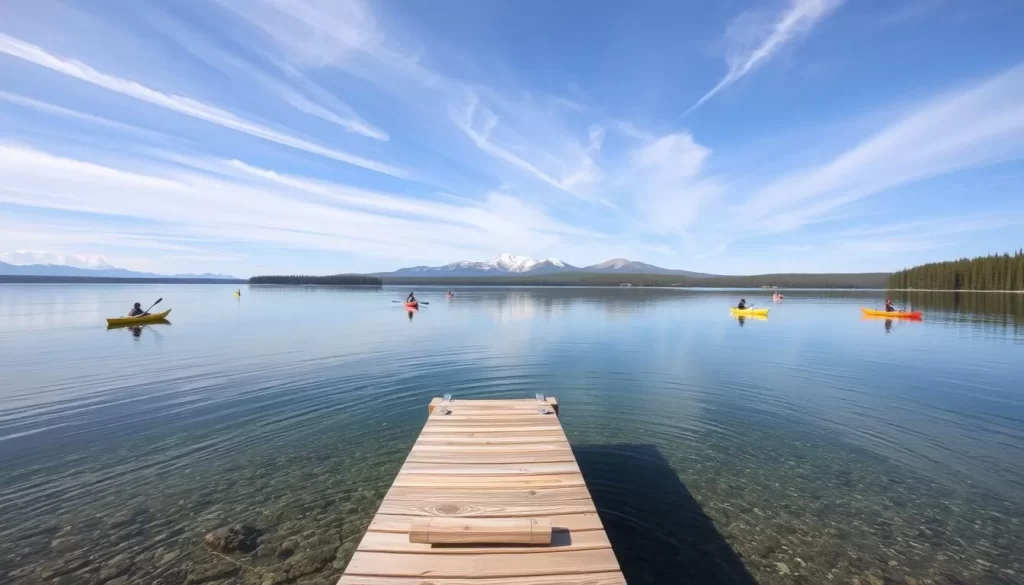
Where to Stay Around Great Slave Lake
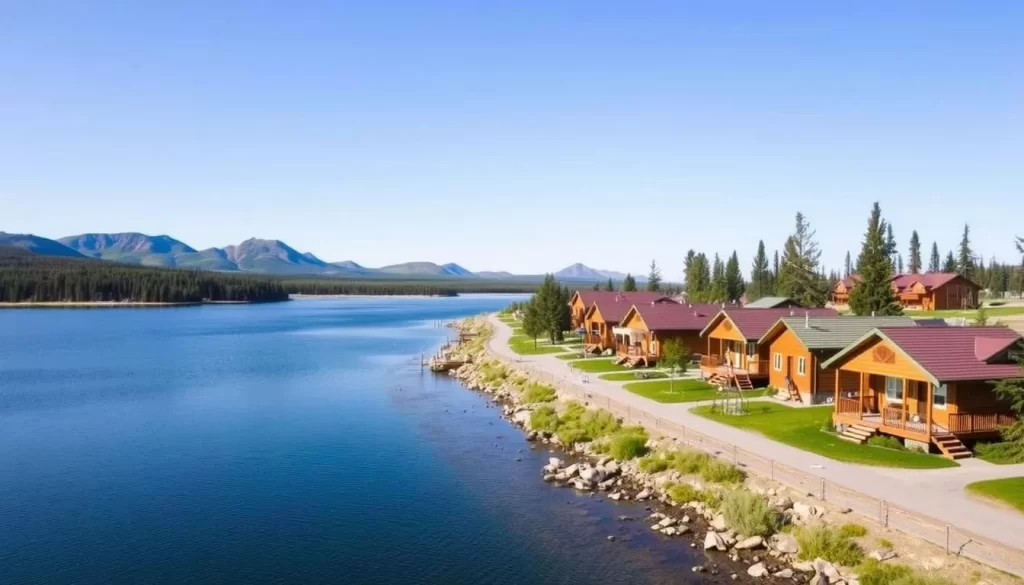
Your Great Slave Lake adventure starts with choosing the perfect accommodation, whether you’re looking for comfort or adventure. The area around Great Slave Lake offers a variety of options to suit different needs.
Yellowknife Hotels and Lodging
Yellowknife, being the closest city to Great Slave Lake, offers a range of hotels and lodging options. You can choose from luxury hotels to budget-friendly accommodations, ensuring a comfortable stay before or after your lake adventure.
Remote Lodges and Wilderness Retreats
For a more secluded experience, consider staying at one of the remote lodges or wilderness retreats around Great Slave Lake. These lodges often provide guided tours and activities, enhancing your overall experience in the lake area.
Camping Options
Camping is another great way to experience Great Slave Lake. Territorial parks near Yellowknife offer developed campgrounds with amenities. You can also go wilderness camping, which allows you to be self-sufficient and enjoy the pristine beauty of the lake. For those who enjoy kayaking, the new North Arm Territorial Park campground will be an ideal base.
Dining and Local Cuisine
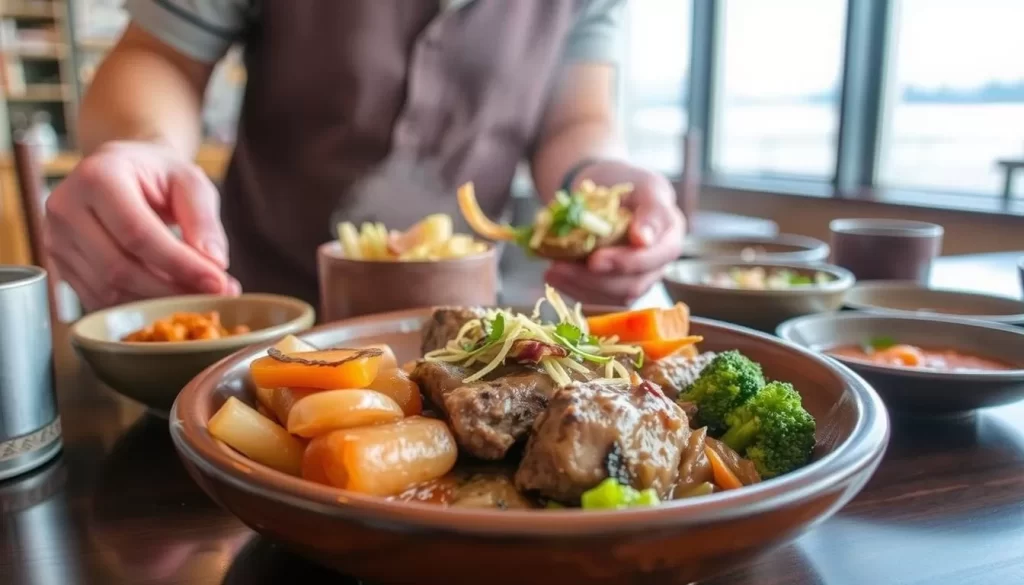
As you explore the vast wilderness around Great Slave Lake, you’ll discover a culinary scene that’s deeply rooted in the region’s indigenous heritage and the freshness of its waters. The local cuisine is a reflection of the land and its bounty.
Yellowknife’s Best Restaurants
Yellowknife is home to a variety of restaurants that serve dishes made with fresh, locally sourced ingredients. You can enjoy fresh-caught fish from Great Slave Lake, including whitefish, inconnu (known locally as “coney”), or arctic grayling, prepared simply to showcase their delicate flavors.
Traditional Northern Foods to Try
Traditional northern cuisine reflects the region’s hunting and gathering heritage, with fish playing a central role. You might have the opportunity to sample traditional Indigenous foods like dried fish (known as “dry meat”), bannock (a quick bread), and wild berry preserves that have sustained northern peoples for thousands of years. Foraged ingredients like wild blueberries and mushrooms add distinctive northern flavors to both traditional and contemporary dishes, all sourced from the pristine water and lands around Great Slave Lake.
Planning Tips for Your Great Slave Lake Adventure
To ensure a memorable experience at Great Slave Lake, it’s crucial to be well-prepared. Whether you’re looking for a relaxing getaway or an action-packed adventure, careful planning is key.
What to Pack
Packing the right gear is essential for a successful trip. If you plan on paddling, consider bringing a kayak or canoe, and don’t forget safety equipment like life jackets. For those new to paddling, a canoe or kayak course can be beneficial. Layered clothing is also a must due to the unpredictable Northern weather.
Guided Tours vs. Self-Guided Exploration
When deciding between guided tours and self-guided exploration, consider your experience level and what you hope to achieve. Guided tours offer local expertise and safety support, making them ideal for first-time visitors or those engaging in activities like paddling or fishing. For a more flexible trip, self-guided exploration might be preferable, but it requires more preparation and navigation skills.
Many visitors opt for a combination of both, booking guided tours for specialized activities while exploring accessible areas independently. This approach allows you to enjoy the benefits of local knowledge while maintaining flexibility in your trip planning.
Conclusion
Great Slave Lake offers an unparalleled adventure, blending the thrill of exploration with the serenity of nature’s majesty. As one of North America’s last great wilderness treasures, it stands out for its pristine waters, rich cultural heritage, and the vast array of activities it offers across all seasons.
From the dancing Northern Lights to trophy-sized lake trout, the experiences available at Great Slave Lake are as diverse as they are unforgettable. The Northwest Territories’ commitment to sustainable tourism ensures that this remarkable region remains pristine for generations to come, with responsible tour operators and park management protecting its unique ecosystems.
Whether you choose to explore the accessible areas near Yellowknife or venture into the remote wilderness of the East Arm, Great Slave Lake rewards visitors with a profound sense of connection to the natural world. The variety of activities, from paddling its vast waters to learning from Indigenous communities, offers transformative experiences for those willing to venture beyond the ordinary.
As you plan your trip, remember that Great Slave Lake operates on nature’s schedule. Embracing flexibility and respecting the environment will ensure your journey exceeds all expectations. With its unique blend of natural beauty, cultural richness, and adventure, Great Slave Lake is a destination that promises to leave a lasting impression on all who visit.
The above is subject to change.
Check back often to TRAVEL.COM for the latest travel tips and deals.
